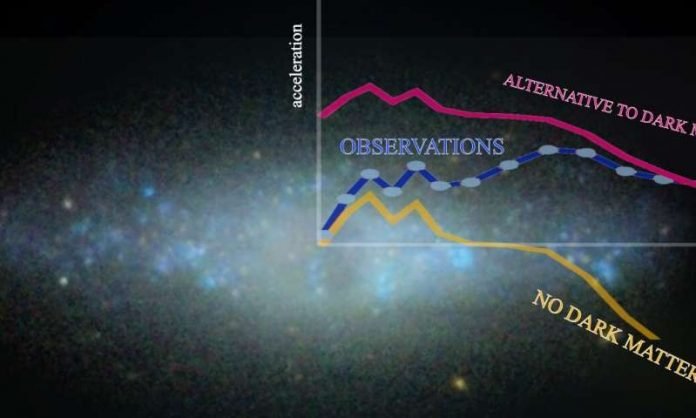
In a new study, scientists have found new evidence to support the existence of dark matter.
The finding removes the recent doubts on the presence of dark matter within galaxies.
The research was conducted by the International School of Advanced Studies (SISSA).
Research has shown that the attractive force generated by matter is insufficient to explain many gravitational effects, such as the expansion of the universe and the movement of stars in the galaxies.
This has led to the theory of the existence of undetectable dark matter, and scientists suggest that galaxies are embedded in its spherical halo.
Dark matter is thought to account for 90% of the matter in the universe, but its existence has been only demonstrated indirectly.
For example, a previous study has strongly questioned the existence of dark matter in the galaxies.
It obtained an empirical relationship between the total gravitational acceleration of the stars (observed) and the component which scientists would observe in the presence of only ordinary matter in the classical Newtonian theory.
This empirical relationship seemed valid in all the galaxies they analyzed and at any galactic radius.
In the current study, the team analyzed the rotation curves of galaxies other than the classical spiral kind—72 galaxies with low surface brightness (LSB) and 34 dwarf disc galaxies.
Their results show a relationship, which, besides total gravitational acceleration and its ordinary component, also involves the galactic radius and the morphology of the galaxies.
According to the team, their finding not only demonstrates the inexactness of the empirical relationship previously described but also removes doubts on the existence of dark matter in the galaxies.
The new finding could provide crucial information on the understanding of the nature of dark matter.
One author of the study is Chiara Di Paolo, a doctoral student of astrophysics at SISSA.
The study is published in the Astrophysical Journal.
Copyright © 2019 Knowridge Science Report. All rights reserved.



